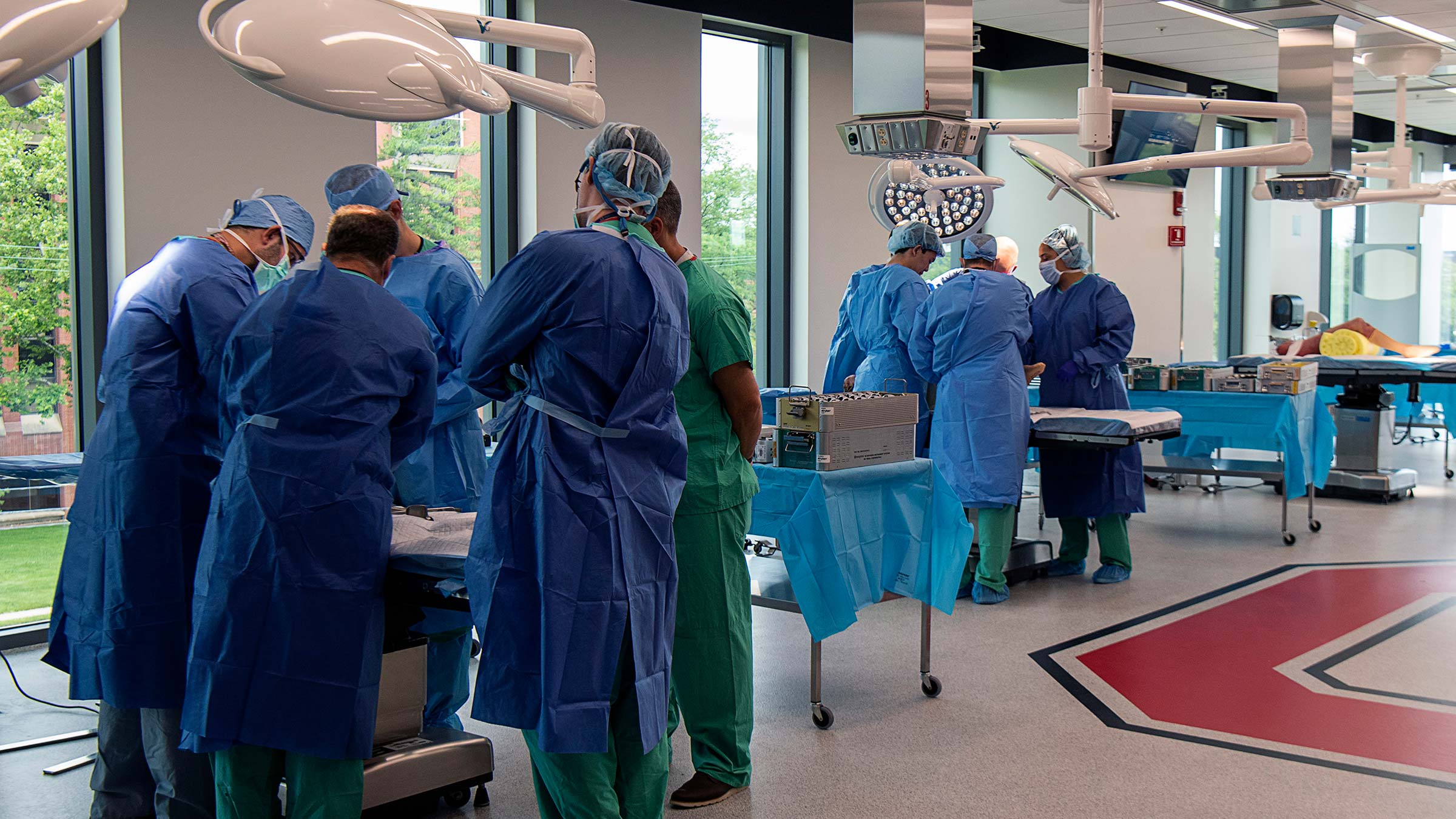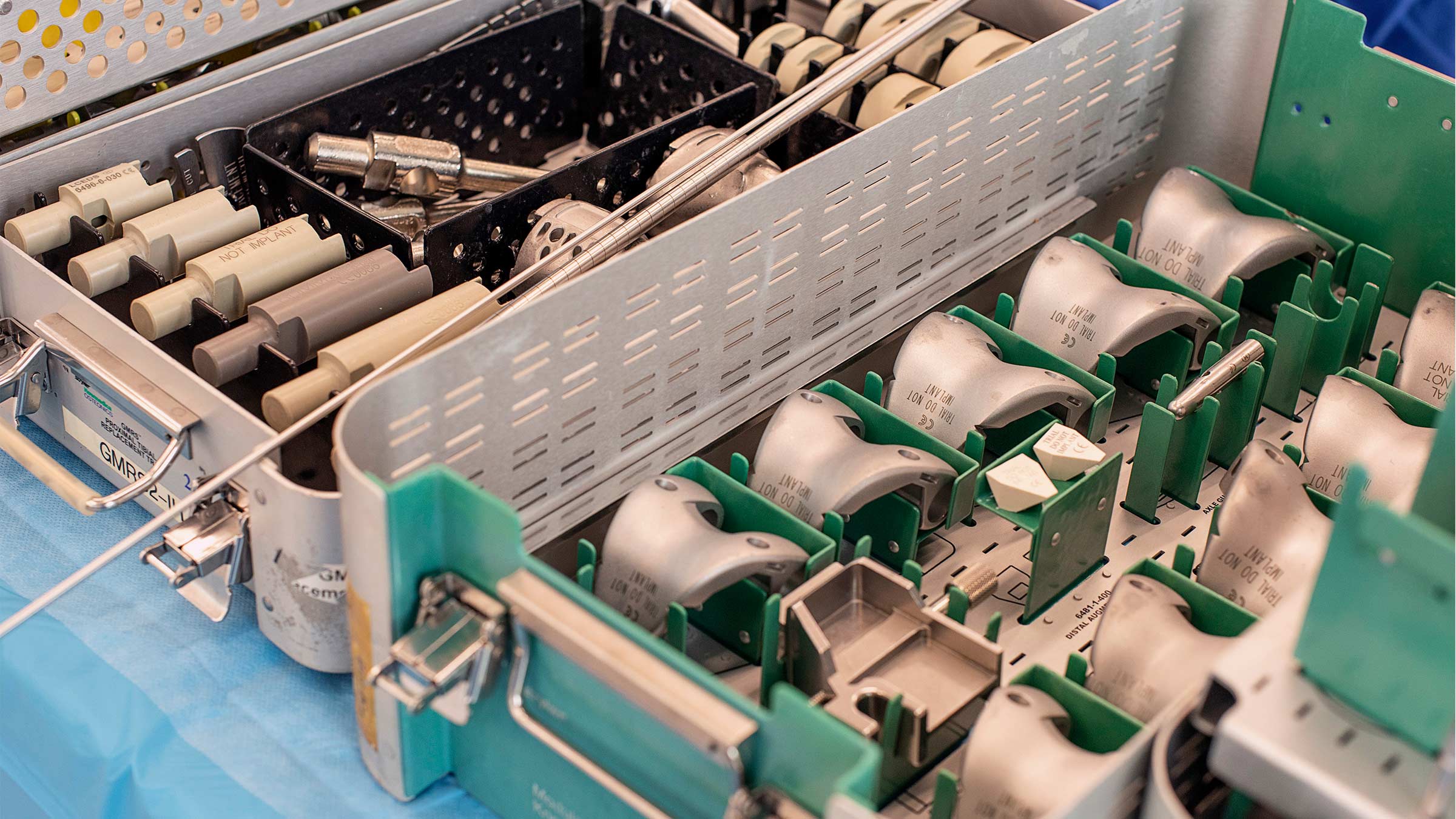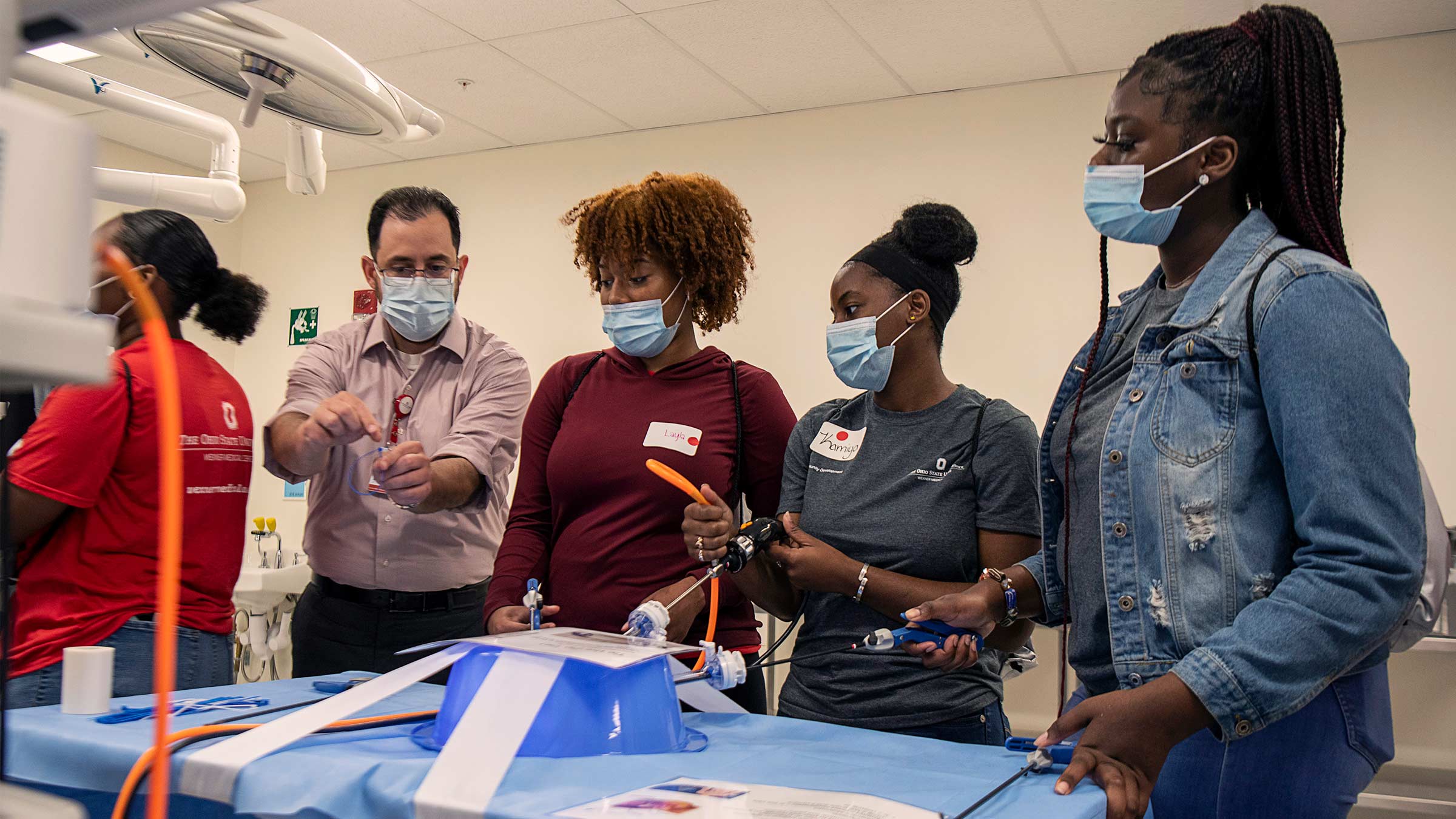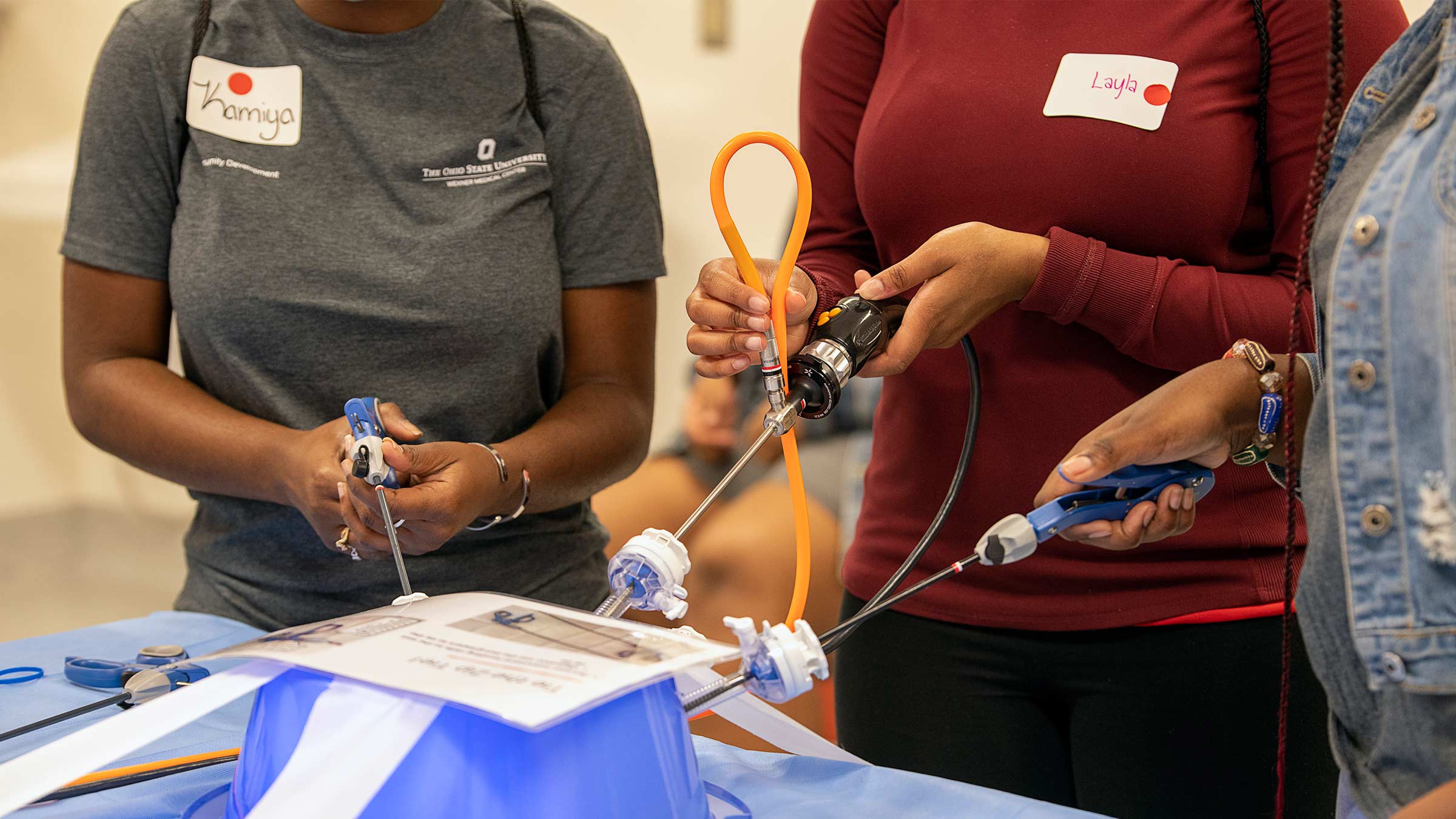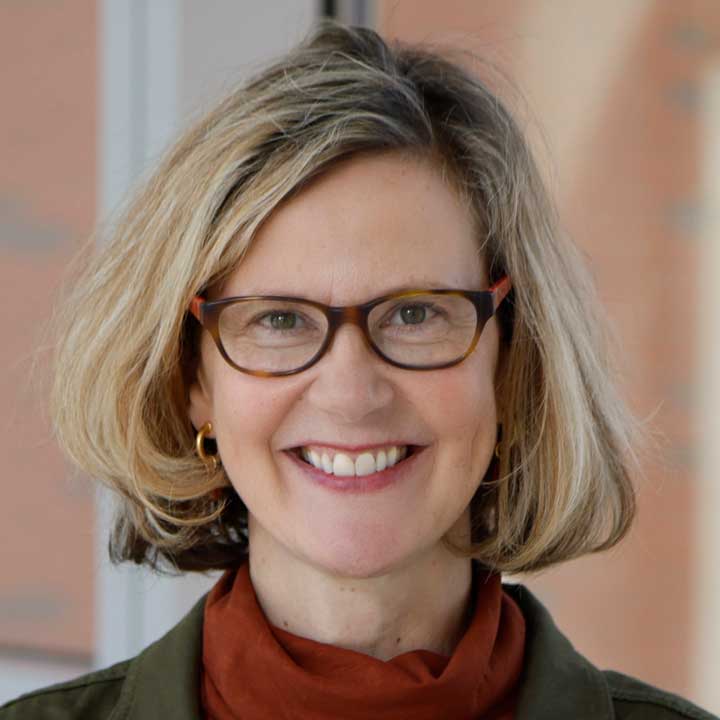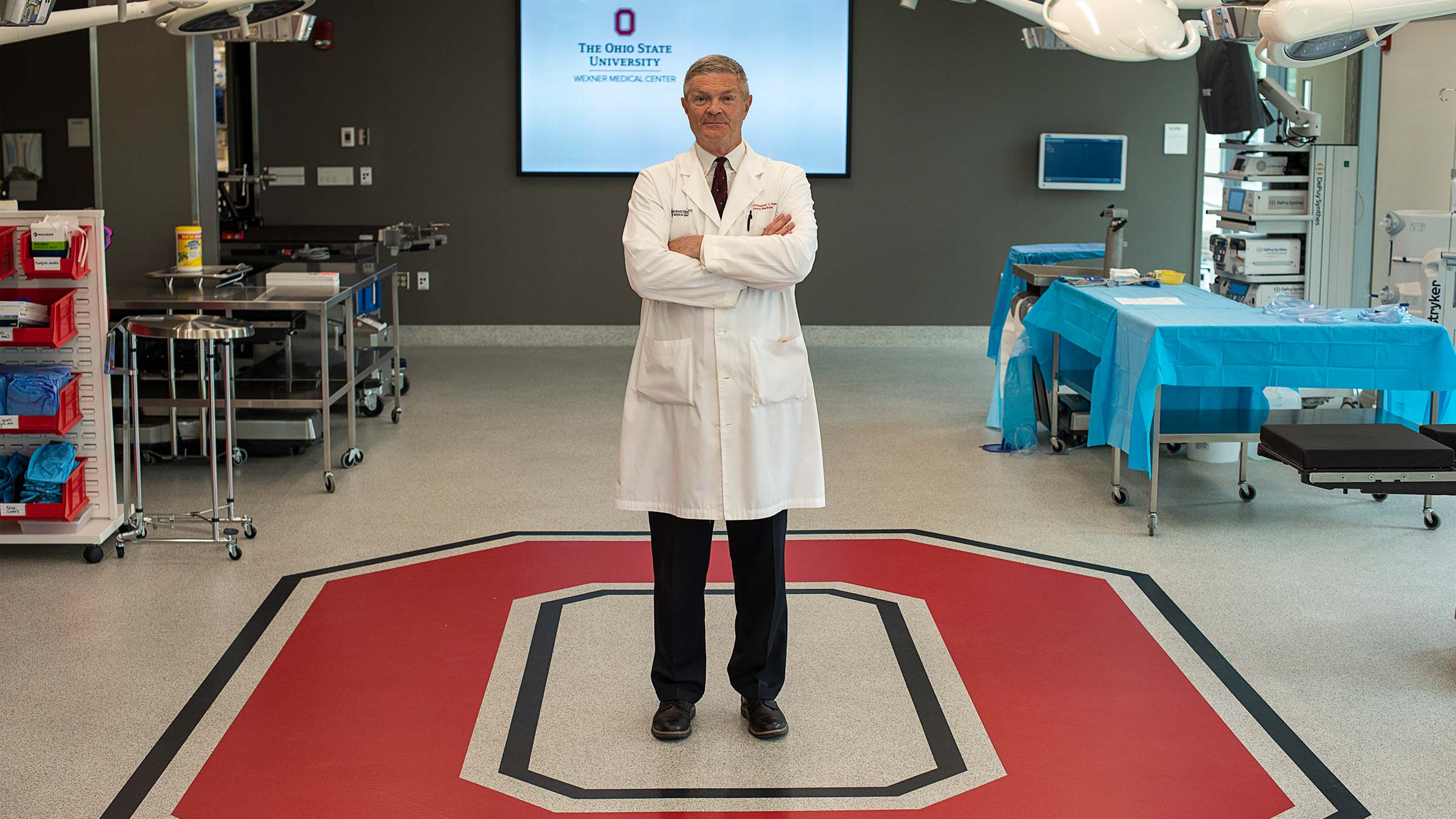
Imagine making your first incision on a patient as a new surgeon. In days past, that initial procedure might have been the first time you operated on a real human body.
Today, surgical trainees and experienced surgeons alike at The Ohio State University Wexner Medical Center benefit from a unique environment that simulates real-world surgeries to improve skills and allows for testing of innovative surgical procedures.
The Surgical Skills Lab at the Jameson Crane Sports Medicine Institute is one of only a handful of such centers available at academic health centers. Learners, including medical students, residents and surgical fellows, hone their skills as authentically as possible on human cadavers or anatomical gifts, generously donated for medical science.
“Surgical training used to follow the mantra ‘see one, do one, teach one,’” says Frank Piscitani, the lab’s associate director. “That means a resident’s first time performing a surgical procedure could likely be on a real patient. That is an incredibly stressful and high-stakes environment. Now, residents can practice in a realistic but controlled and safe environment. They can make their mistakes here, learn from them and fix them.”
A revolutionary approach to surgical education
The 5,000-square-foot lab is bright, spacious and illuminated by two full walls of windows providing an abundance of natural light. Here, surgeons from a variety of specialties — everything from orthopedics to hand surgery, plastic surgery and neurosurgery — practice and test procedures and conduct research testing on new devices and surgical materials. The lab also is a venue for international courses, national industry offerings and institutional partnerships.
The surgical skills lab has nine stations: seven in the main space and two across the hall in the Stealth Lab for Innovation and Collaboration. Made possible by a donation from the Anderson Corporation, the Stealth Lab allows surgeons to collaborate and work on innovative ideas that may not be ready for a broader audience just yet, giving them time and space to create new devices, practice skills or perfect groundbreaking procedures. It’s here where surgeons test new materials used to replace cartilage, bone and tissue — the lab offers the ability to test the limits of durability and use.
Both educational spaces are fully A/V integrated, connecting to a 98-inch touch-screen TV. Using this technology, it’s possible for surgeons to broadcast education globally and consult in real time with surgeons in other locations.
“This space revolutionizes the ways in which we refine our surgical techniques, acquire novel skills and translate research into tomorrow’s health care solutions,” says Christopher Kaeding, MD, executive director of Sports Medicine and the Judson D. Wilson Professor of Orthopedic Surgery at The Ohio State University College of Medicine.
Dr. Kaeding spent decades building the sports medicine program at the Ohio State Wexner Medical Center, which started with just two physicians and a handful of staff. Today, it numbers more than 300 faculty and staff. His ultimate goal was to create a multidisciplinary and comprehensive facility solely dedicated to the practice of sports medicine, bringing together all the disciplines required to center care around the patient. He wanted to make sure it was proximate to Ohio State’s athletic facilities but easily accessible for anyone in need of sports medicine care.
An important part of that vision, he knew, wasn’t just treating patients, but ensuring that Ohio State’s team was continually able to push the frontiers of advanced sports medicine and orthopedic procedures.
His vision came to fruition in 2016 with the opening of the Jameson Crane Sports Medicine Institute, which was funded by a generous gift from the Jameson Crane family. The Surgical Skills Lab, within the same building, opened in 2020.
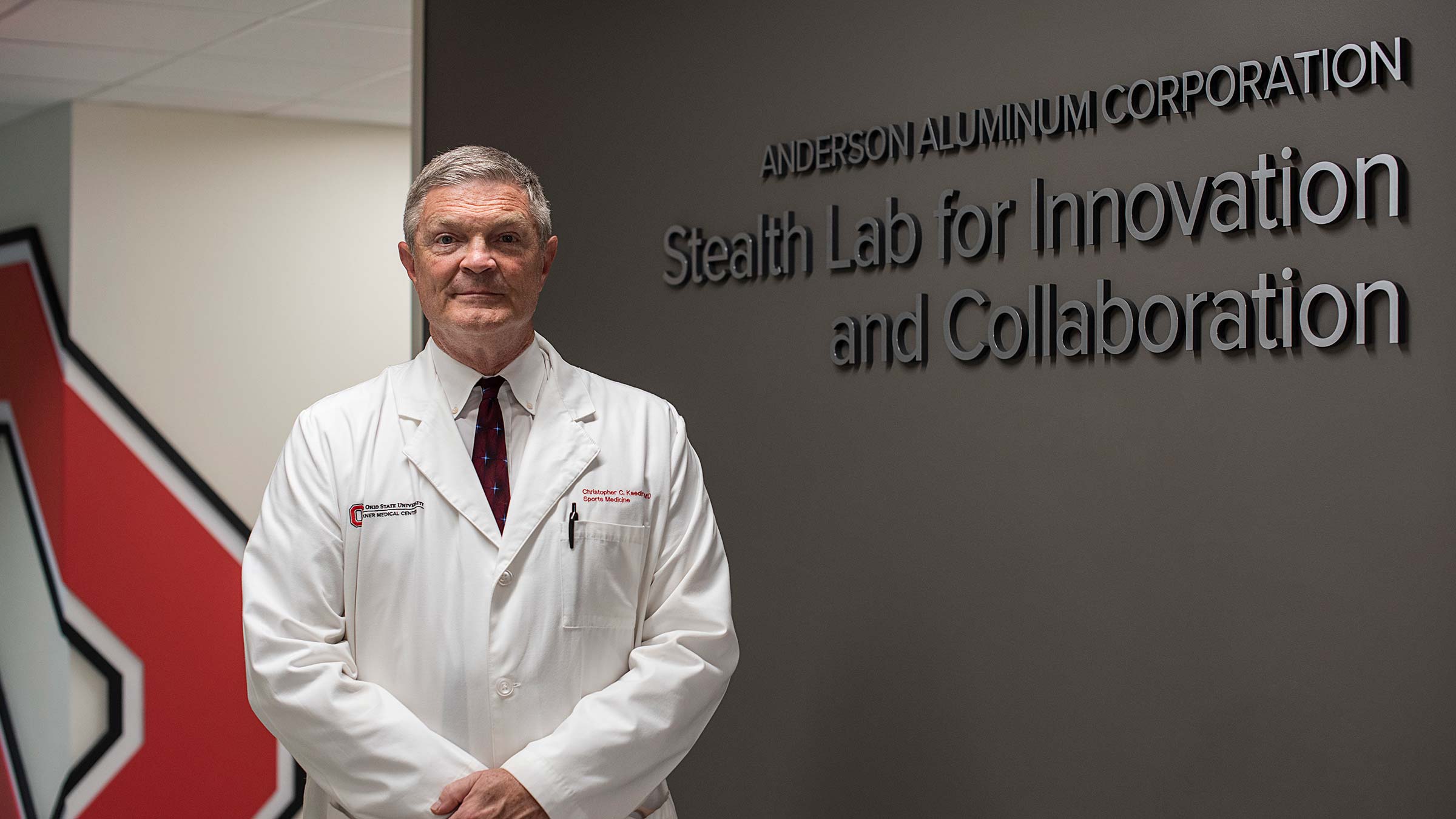
“Spaces like this exist in the private sector,” Dr. Kaeding says, “but it’s very rare to find a facility like this at a medical center. It provides an extraordinary opportunity for us to conduct the entire lifecycle of surgical advancements, from research to development.”
Providing a whiteboard for innovation
In addition to being a facility for surgeons-in-training, the lab provides the ideal controlled environment for seasoned surgeons to evaluate the latest products, advance their technical skills outside an operating room and explore innovative new procedures before taking them to the OR.
“If the surgical team is aware of an upcoming rare or complex case, they can reserve time in the skills lab and practice a procedure they might only see once in their career,” Piscitani says. “Residents now have integrated hands-on objectives in their curriculum, and the lab is definitely a focal point for those seeking fellowships. Not everyone has access to a lab like this.”
Mallory Allen, education resource specialist at the Surgical Skills Lab, sets up the tables, working with vendors to secure the proper tools and training assistance for using them. Medical device companies often bring new concepts or ideas to the lab, relying on the expertise of Ohio State’s surgical team to test and consult on the projects.
Providing inspiration for careers in medicine
On a summer day, high schoolers from Columbus City Schools used the lab as part of a program through The Ohio State University School of Health and Rehabilitation Sciences. The teenagers were attempting a mock laparoscopic surgery by stapling a piece of surgical mesh hidden beneath an overturned bucket. They could see it on the monitor, but their hands moved in the opposite direction on the monitor, making the procedure a challenge.
“You’re naturals with holding that camera still. You guys have steady hands,” Piscitani says.
The Columbus school students were part of a weeklong camp that aims to help high school students get a sense of various health care professions through hands-on activities.
Fulfilling a mission to educate and innovate
Meanwhile, across the hallway, third-year surgical residents were practicing a rare cancer surgery — one they may never perform but need to be ready for. John Alexander, MD, a musculoskeletal surgical oncologist and clinical assistant professor of Orthopaedics in the Ohio State College of Medicine, was helping them go through a distal femoral replacement and a proximal tibia replacement.
“You’re getting the resident involved as much as you can, but a lot of times you can’t let them get their hands as dirty as they want to,” Dr. Alexander says. “This lab gives them a chance to go through the steps of a surgery and translate what they see in the OR, or what they’re going to see in the OR, and teach them to do the steps themselves.”
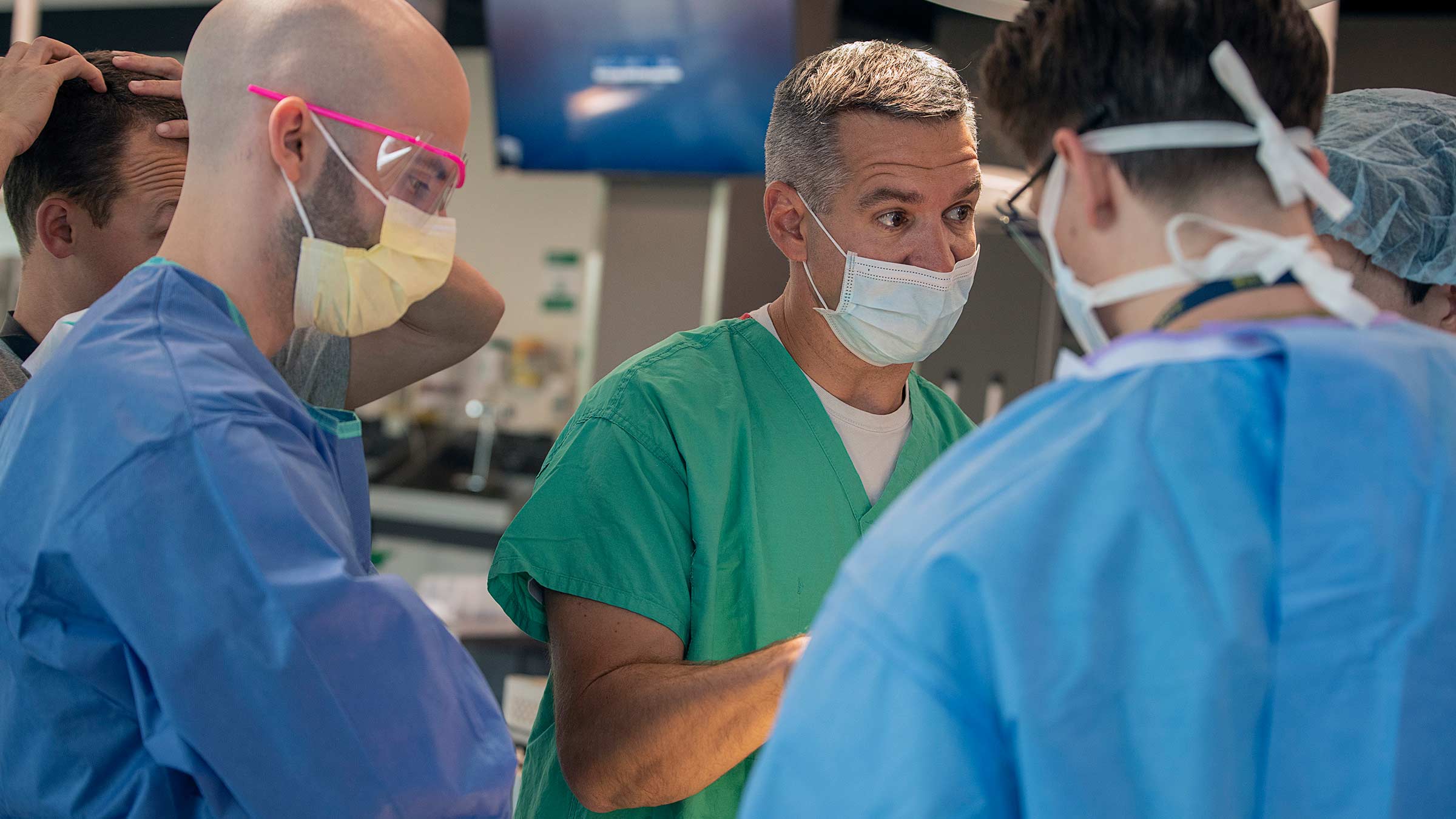
Thomas Scharschmidt, MD, an orthopedic oncologist and clinical professor of Orthopaedics in the College of Medicine, has built an orthopedic skills program for residents and uses the lab frequently.
“It’s great,” he says. “We’re doing a lot more competency education in our lab environment to reach milestones. It gives them the confidence that they’re ready to be operative on real patients.”
The lab helps increase safety for patients, says Victoria Clark, MD, a musculoskeletal oncology fellow at The Ohio State University Comprehensive Cancer Center – Arthur G. James Cancer Hospital and Richard J. Solove Research Institute.
“The lab gives the students, me and the residents a chance to practice approach techniques and surgical procedures without having the risk of actually harming a patient,” she says.
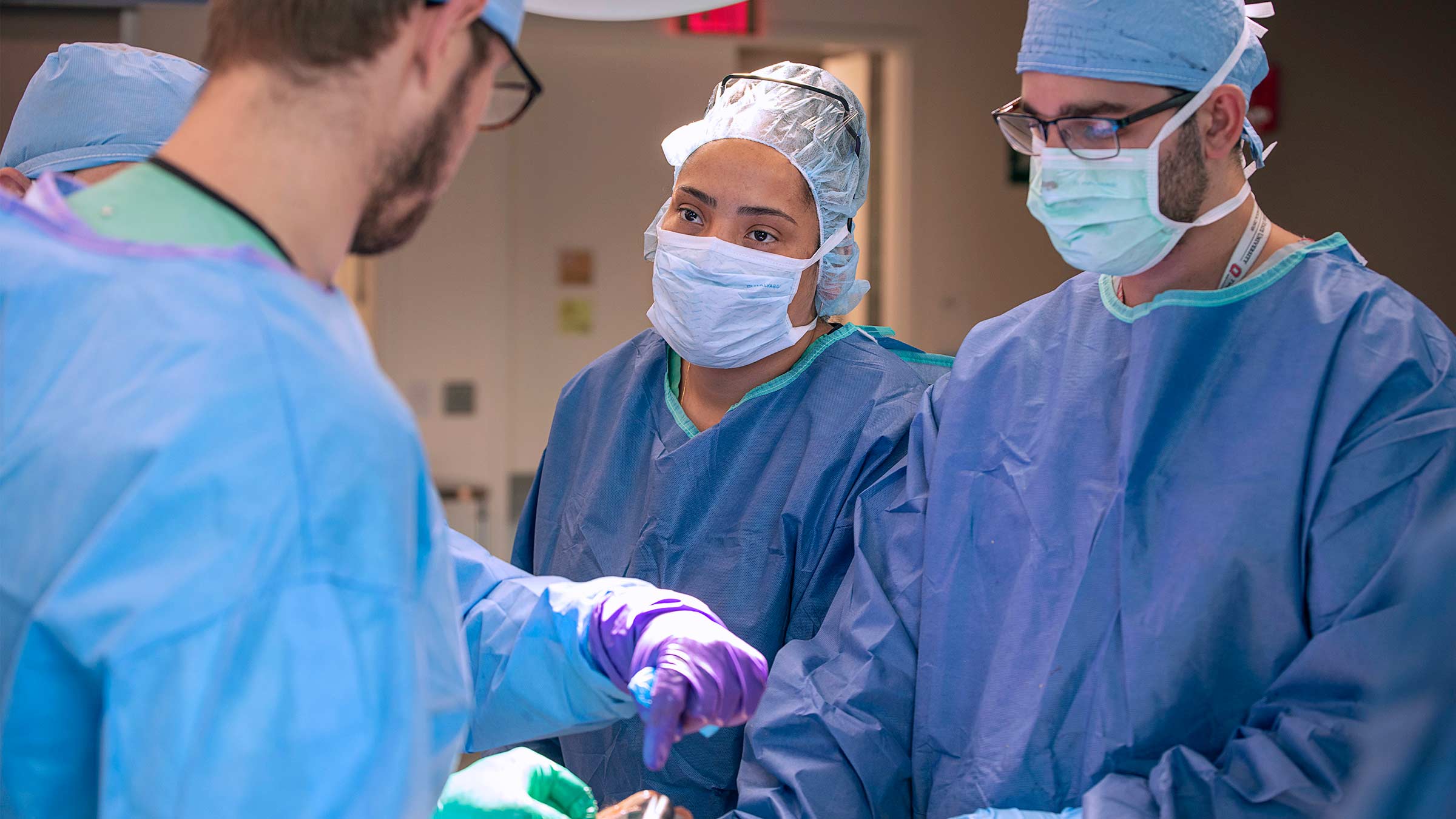
Piscitani pivots back and forth between the two rooms, managing the simulation spaces. He knows the importance of practice, having led simulated emergencies for paramedics at the Columbus Division of Fire and instructional broadcasts for the Food and Drug Administration.
On one side, he’s hopeful that a teenager’s interest will be piqued. On the other, residents who’ve studied for years are feeling the stress of what it’s like to perform a surgery. Both sides must suspend their disbelief a little. The stakes may not be high, but the pressure to perform with precision and care is real.
Piscitani is hopeful that by acclimating themselves to the practice of surgery, the high school students can gain an appreciation for the everyday challenges surgeons face. He believes the younger generation already is better prepared to use advanced surgical tools, since they grew up with computers.
“The surgical skills lab generates excitement about entering surgically based professions. Hopefully they’ll be our next residents.”

Ready to be at the top of your game?
Ohio State’s sports medicine experts are here to keep you in your game, maximize your performance and keep you healthy.
Learn more


